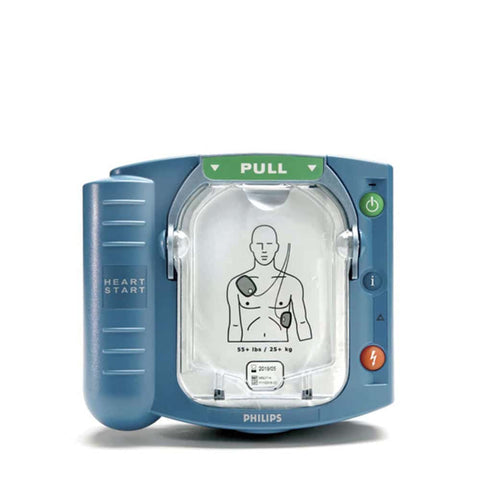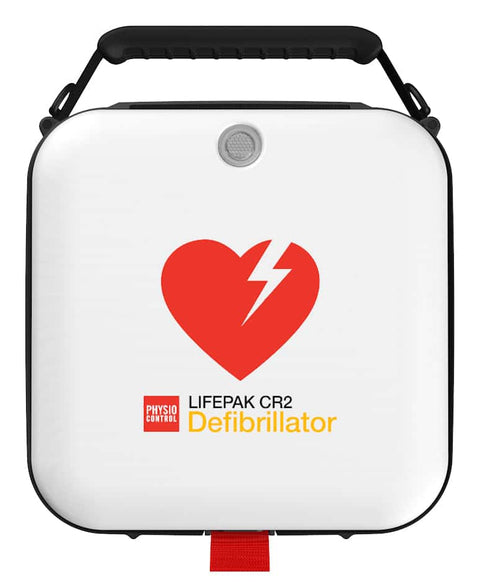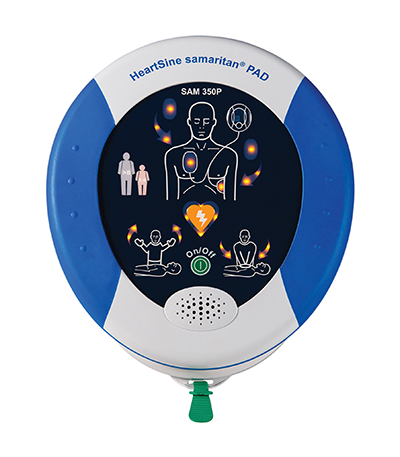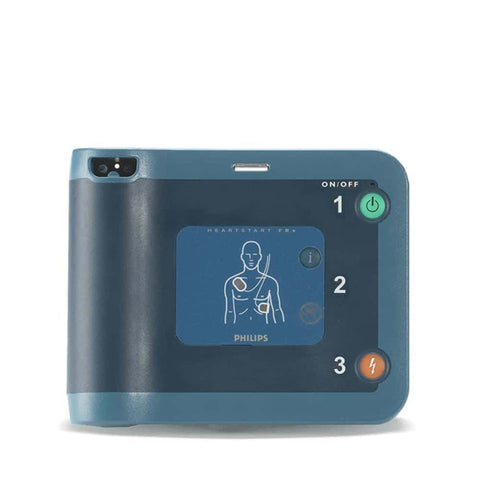Sudden cardiac arrest (SCA) can happen to anyone, anywhere—including where we feel the safest: at home. According to the American Heart Association, around 70% of cardiac arrests occur at home. That’s 7 out of 10 cases happening in your personal space, where professional medical help might not arrive in time. Having an Automated External Defibrillator (AED) at home could be the difference between life and death.
Forget the concerns about lacking training, not being at risk, or not having enough storage space – we’re here to explain why every household should have an AED and which ones are most in need. We’ll also address some common questions people have about having an AED at home.
AEDs have been approved around the world for over three decades. It is believed they have saved 3 million lives.
Top Reasons to Have An AED at Home
Your house is where you spend the majority of your time, so doesn’t it make sense to be prepared? Here are the top reasons to have an AED in your home:
You or someone in your home is elderly
Age is one of the major risk factors for cardiac arrest. If you are in your retirement years or live with elderly family members like parents or grandparents, an AED provides an invaluable safety net. While age doesn’t guarantee a cardiac episode, the risk significantly increases after the age of 60, especially for individuals with underlying health conditions like high blood pressure or diabetes. So, if you or someone you love is in your senior years, we highly recommend getting an AED for your household.
You or someone in your home has heart disease or a family history of coronary artery disease
If you or someone in your household has a history of heart disease, coronary artery disease, or previous cardiac events, the risks are higher. People with these conditions are more likely to experience SCA—and the risk is even higher if they are also 60+. An AED at home ensures you’re equipped to respond immediately should the need arise.
You live in a remote area or far from a hospital
For individuals or families living in rural or remote areas, getting to a medical facility quickly—or vice versa—can be extremely difficult, if not impossible. Emergency services may take upwards of 30 minutes or more to arrive, making the presence of an AED in your home crucial. After all, every minute that passes without defibrillation reduces the chance of survival by 7-10%.
You need to be prepared to handle all types of medical emergencies because you can’t always rely on getting professional medical intervention in time. In these situations, waiting for medical help may not be an option. Taking matters into your own hands and having the tools and knowledge to act quickly in an emergency is essential.
You want peace of mind
Even if you are not at risk or live far from a hospital, sometimes, the simple act of preparation brings peace of mind. Owning an AED at home means that whether you're hosting a family dinner with elderly relatives, having coworkers over, or just enjoying a quiet evening with your loved ones, you're better prepared to handle the unexpected.
You could save your neighbors
It may not be your family; it often is the home across the street or down two houses. You are still going to get there multiple minutes before EMS. Do the neighbors know you have an AED, or if you are a subscriber to Pulse (www.pulsepoint.or)? every minute that passes eliminates the chance of survival by 10%. Every second counts in a response time!
FAQs About AEDs For Home and Personal Use
We’ve compiled answers to some frequently asked questions about AEDs in the home:
Can you purchase an AED for personal use?
Yes, anyone can purchase an AED for personal use! The FDA has approved several Automated External Defibrillators (AEDs) for home use, including the HeartStart Home OTC Defibrillator and Philips HeartStart OnSite Home AED Kit.
Who can use an AED?
Anyone can use an AED! These devices are designed to be intuitive and provide audible or visual prompts for guidance. You can also watch information videos online or enroll in a CPR/first aid course at your local fire or police department. Here at AED First Response, we are more than happy to point you in the right direction regarding training resources.
Do I need training to use an AED?
While no formal training is required, it is highly recommended to take a CPR course to familiarize yourself with the device and improve your confidence during an emergency. Here at AED First Response, we are more than happy to point you in the right direction regarding training resources.
Where should I store my AED in my home?
Store the AED in a place that can be reached quickly during an emergency. It should be located in a central area, such as a hallway, or near common living spaces like the kitchen or living room. Avoid placing it in remote areas like that basement or attic, which may take longer to get in a pinch. Do not store the AED in humid or damp areas, like bathrooms or basements, as moisture can damage the device.
Will an AED work on someone with a medical condition such as diabetes or high blood pressure?
Absolutely. An AED can be used on anyone experiencing sudden cardiac arrest, regardless of conditions like diabetes or high blood pressure. The AED will automatically analyze the heart's rhythm and only deliver a shock if it’s necessary.
What happens if I use the AED incorrectly?
If you accidentally make a mistake while using the AED, it’s unlikely to cause harm. AEDs are equipped with safety features to prevent misuse. For example, if the pads are placed incorrectly, the device will alert you and prompt you to adjust them, and if no shock is needed, the AED won’t deliver one. Plus, all 50 states have "Good Samaritan" laws that protect individuals from civil liability when using these devices.
If I use my AED, should I still call 911?
Yes, even if you use your AED, you should still call 911 immediately. The AED will help stabilize the person by delivering a shock if needed, but professional medical assistance is crucial for continued care.
Are AEDs safe to use on children?
Yes, AEDs (Automated External Defibrillators) are safe for use on children. However, there are important considerations, such as using child-specific pads and adjusting the shock level to suit younger patients, typically those under 8 years old or weighing less than 55 pounds.
What maintenance does an AED require?
Maintaining your AED is fairly simple; you’ll just need to replace pads and batteries periodically as recommended by the manufacturer, typically every 4-5 years.
What is the cost of an AED for personal use?
The cost of an AED can range from $1,200 to $2,500, depending on the brand, features, and included accessories. It’s an investment in safety, especially for homes in remote locations or with high-risk individuals.
Contact AED First Response today to purchase an AED for your home
Contact AED First Response at 888.462.9502 or email customerservice@aedfirstresponse.com to find the ideal AED for your home. Our team is dedicated to guiding you through every step of the process, helping you choose the best model for your needs. With AED First Response, you can expect a smooth, professional, and friendly experience from a team committed to ensuring the safety of your family's well-being.








